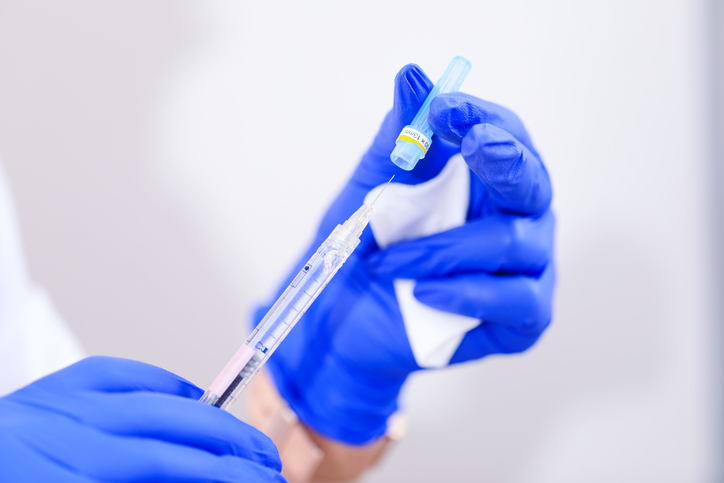President-elect Donald Trump says he intends to rescind U.S. Environmental Protection Agency (EPA) regulations enacted by the Obama administration that harm the economy while providing little or no environmental or health benefits.
Based on expert testimony delivered to a committee of the National Research Council (NRC) investigating possible scientific misconduct at EPA, EPA’s regulations setting stricter limits on small particles of air pollution could be in the new president’s crosshairs. NRC is part of the National Academies of Sciences.
Among the matters NRC examined is how EPA has justified its air quality rules on particulate matter smaller than 2.5 microns (PM 2.5), about one-fourth the diameter of pollen particles. EPA claims PM 2.5 gets into people’s lungs and bloodstreams and endangers human lives and health.
In a February 3, 2012, letter to U.S. Rep. Fred Upton (R-MI), chairman of the U.S. House Committee on Energy and Commerce, EPA Administrator Gina McCarthy wrote there is “no evidence of a threshold below which health effects associated with exposure to fine particles—including premature death—would not occur.”
As a result, EPA says the further reduction of emissions from power plants, factories, vehicles, and heavy equipment always yield health benefits that potentially save thousands of lives each year.
Volunteered to Testify
Dr. John Dale Dunn, a civilian faculty member of emergency medicine at Fort Hood in Texas, and Steve Milloy, who runs JunkScience.com, learned of the NRC investigation and sent requests to give in-person presentations and written testimony on the topic. They and two other researchers testified before the committee on August 24.
Part of Dunn’s testimony focused on the limits of epidemiological studies EPA uses to claim PM 2.5 causes illness and premature mortality. Dunn says epidemiological studies are corrupted by uncontrollable “confounding factors,” meaning they cannot reliably identify causes and effects or scientifically attribute deaths to particulates.
“You cannot separate PM2.5 particles emitted from burning fossil fuels for energy and emissions from factories from particulates in indoor air where people spend most of their time, much less from particles from volcanoes, forest fires, construction projects, dust storms, or from cigarettes that send hundreds of times more ultrafine particles into lungs than what EPA says is lethal if they come from regulated sources,” Dunn said. “Epidemiology is not junk science, but it cannot be used to prove causation, because it can’t control for all relevant factors.
“The way EPA uses epidemiology is deceitful, because it does not acknowledge the limits of the methods and the uncertainties,” said Dunn. “EPA’s air pollution research is built on uncontrolled observational studies, projecting non-proof small associations to create big claims of deaths in particular.”
Calls EPA Tests Illegal, Unethical
In addition to the epidemiological studies EPA uses to justify its PM 2.5 regulations, EPA also funded studies using humans as test subjects.
Milloy and Dunn testified these tests raise legal, ethical, and scientific concerns.
U.S. laws, the Nuremberg Code, Helsinki Accords, and EPA Rule 1000.17 make it unethical or illegal to conduct toxicity experiments on humans, Dunn stated in his testimony.
Milloy testified EPA-funded studies at several universities raised troubling questions about whether participants could truly give “informed consent” based on the information they were provided. Researchers, for example, failed to advise subjects EPA claimed the pollution they were to breathe was toxic, carcinogenic, and deadly. Despite test subjects being exposed to PM concentrations up to 60 times the volume of what EPA claims can be lethal, the EPA-funded scientists only told the participants they might experience minor airway irritation, wheezing, or shortness of breath.
Put Most Vulnerable at Risk
Milloy’s testimony shows many of the people recruited for the studies were those EPA claims are most at risk of harm from inhaling PM 2.5: the elderly, asthmatics, diabetics, people with heart disease, and children.
“This raises important questions,” Milloy said. “If PM2.5 is dangerous or even lethal when emitted by factories or vehicles, how can it be harmless to humans who were intentionally administered pollution many times worse and for longer periods of time than what most people would encounter outdoors?
“If PM2.5 is lethal and there is no safe threshold, shouldn’t EPA officials and researchers have explained this to volunteers, especially in at-risk groups?” Milloy asks. “If it is lethal and there is no safe level, why did no test subjects develop lung, cardiac, or cancer problems, have seizures, or die?”
Unethical, or Lying?
Dunn says the only circumstances under which EPA’s PM 2.5 tests were ethical or legal is if EPA has mislead the public about the dangers of PM 2.5.
“The committee must ask under what circumstances could these human experiments on minors be ethical or legal?” Dunn testified. “The answer, surely, is ‘none,’ unless EPA and its researchers walk back their claims that hundreds, thousands, even millions of people are dying from exposure to ambient levels of small particle air pollution.”
Paul Driessen ([email protected]) is senior policy advisor for the Committee for a Constructive Tomorrow.
INTERNET INFO
John Dale Dunn, “Assessing Toxicological Risks to Human Subjects Used in Controlled Exposure Studies of Environmental Pollutants,” Testimony Given Before the National Research Council of the National Academies of Sciences, August 24, 2016: https://heartland.org/publications-resources/publications/assessing-toxicological-risks-to-human-subjects-used-in-controlled-exposure-studies-of-environmental-pollutants
Steven Milloy, “‘No Safe Level of Exposure’: EPA’s Human Experiments With Particulate Matter,” Testimony Given Before the National Research Council of the National Academies of Sciences, August 24, 2016: https://heartland.org/publications-resources/publications/no-safe-level-of-exposure-epas-human-experiments-with-particulate-matter



